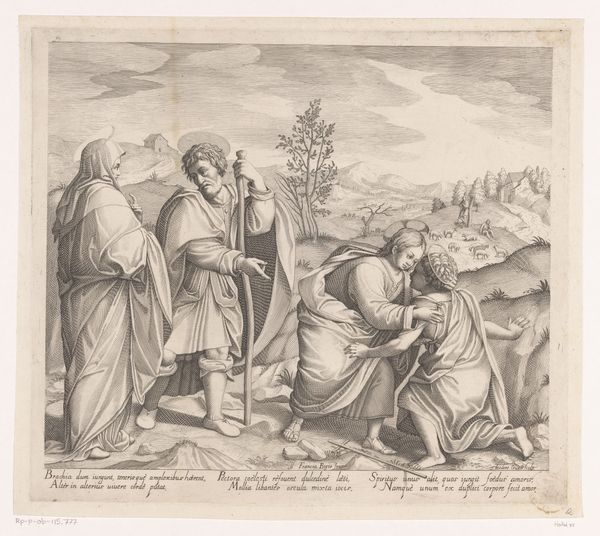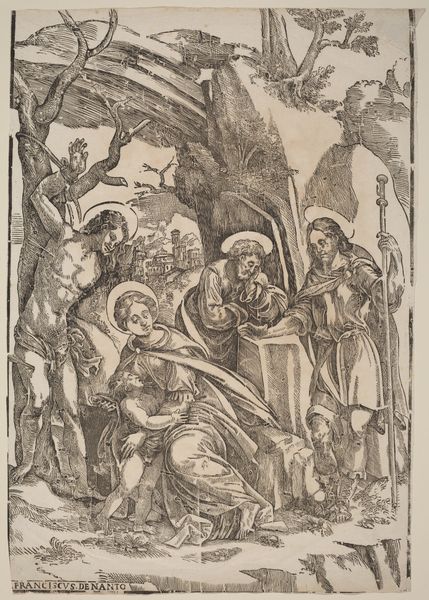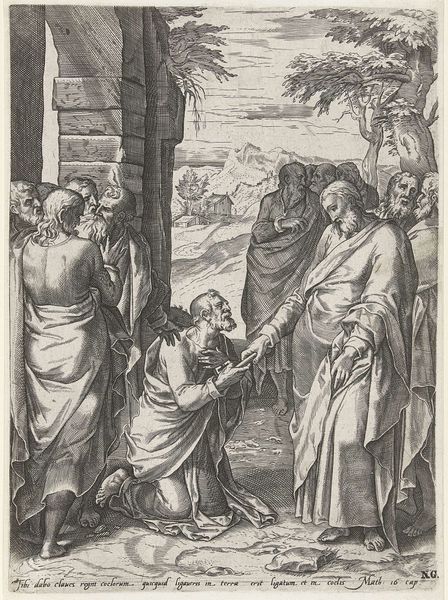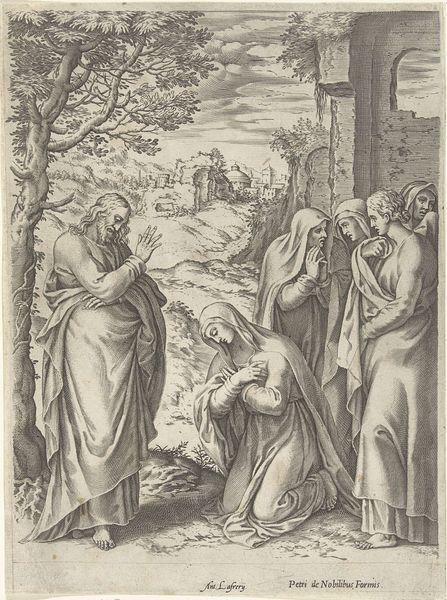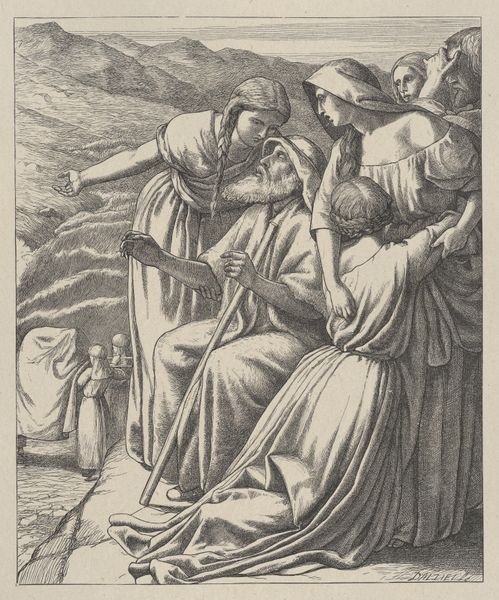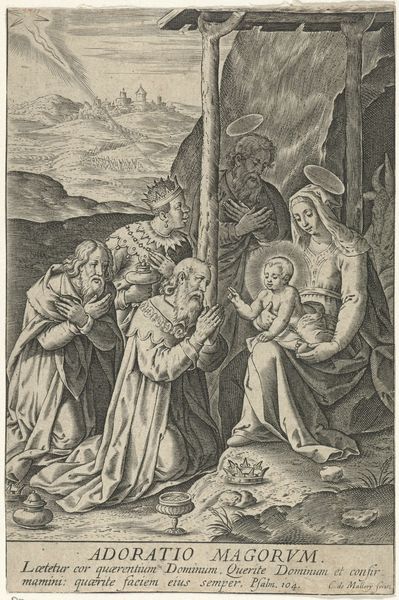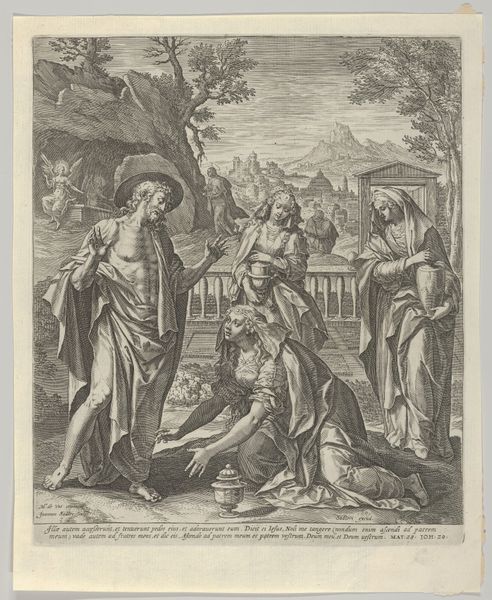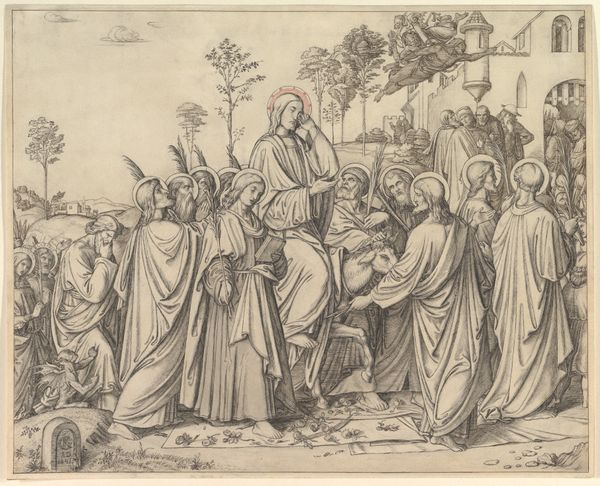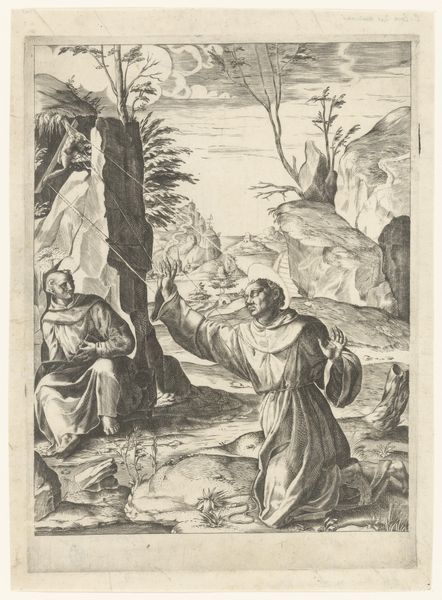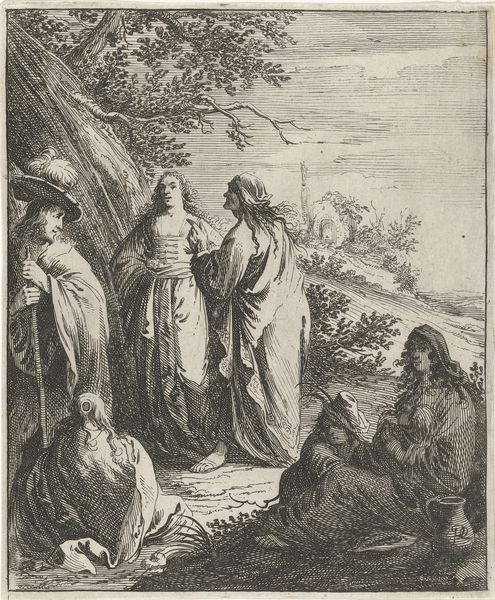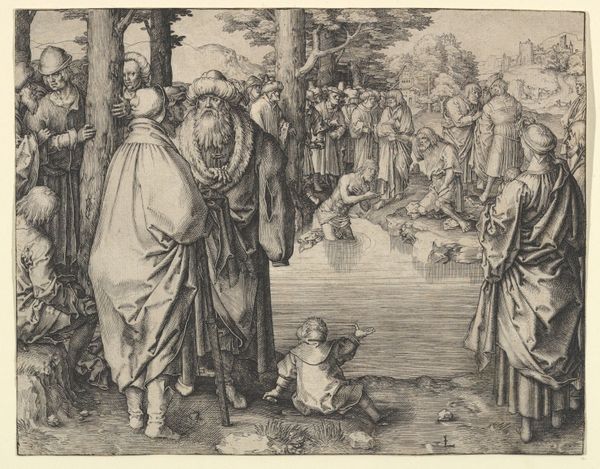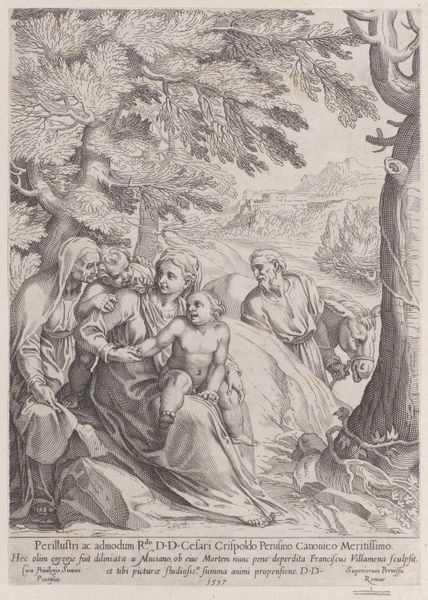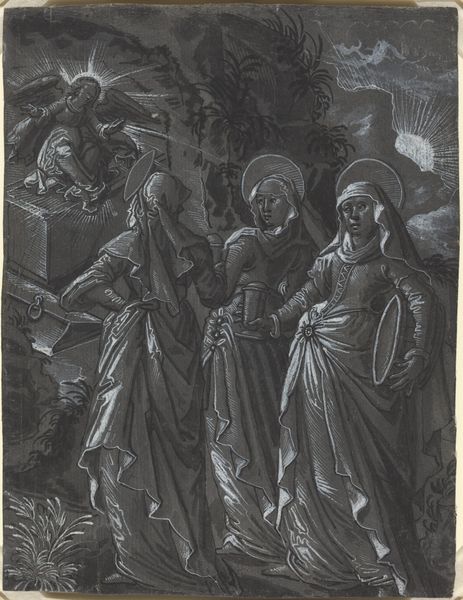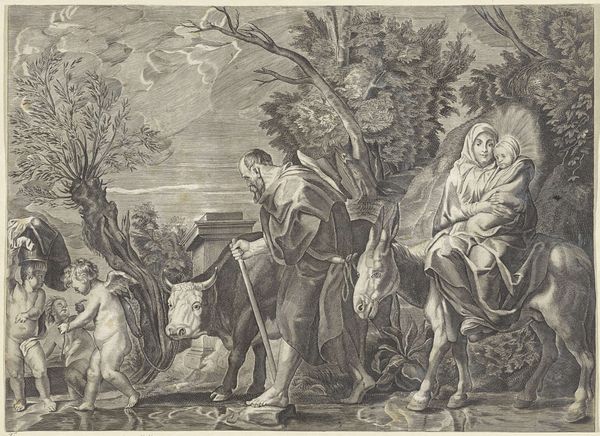![Christ and the Adulteress [recto] by Anonymous](/_next/image?url=https%3A%2F%2Fd2w8kbdekdi1gv.cloudfront.net%2FeyJidWNrZXQiOiAiYXJ0ZXJhLWltYWdlcy1idWNrZXQiLCAia2V5IjogImFydHdvcmtzL2MzMWNmOTEyLTI5NjItNDUxNC05ZGI4LTA0Nzg0MTY1MGRhOC9jMzFjZjkxMi0yOTYyLTQ1MTQtOWRiOC0wNDc4NDE2NTBkYThfZnVsbC5qcGciLCAiZWRpdHMiOiB7InJlc2l6ZSI6IHsid2lkdGgiOiAxOTIwLCAiaGVpZ2h0IjogMTkyMCwgImZpdCI6ICJpbnNpZGUifX19&w=3840&q=75)
drawing, paper, ink
#
drawing
#
narrative-art
#
landscape
#
figuration
#
paper
#
11_renaissance
#
ink
#
history-painting
Dimensions: overall: 16.3 x 20.6 cm (6 7/16 x 8 1/8 in.)
Copyright: National Gallery of Art: CC0 1.0
Curator: Standing before us, we have a drawing titled "Christ and the Adulteress" dating from around 1600, a narrative captured with ink on paper by an anonymous artist during the Renaissance. Editor: It strikes me as deeply melancholic. The stark monochrome amplifies the desperation in the woman’s posture, while the landscape looming behind feels strangely ominous, as if even nature judges her. Curator: Precisely. The figure of the adulteress kneeling is, compositionally speaking, counterbalanced by Christ and the group of men flanking him. He occupies a very distinct pictorial space that suggests judgment but also mercy, which is a significant element. The symbol itself comes into question when you look at her positioning in the pictorial frame as a figure between shame and potential absolution. Editor: Right, Christ's outstretched hand isn’t merely a gesture, is it? In art, hand gestures carry a potent weight of meaning—offering solace or extending judgment, perhaps even reflecting inner turmoil made outwardly visible. I find that contrast riveting! It suggests how readily these men condemned her based on a legal framework of social power, whilst at the heart of it all is the humanity that is reflected in Christ. The contrast in attitude to judgement in religious symbols speaks volumes about those times. Curator: The anonymous artist clearly understood the iconic potency of the narrative. It isn’t just a literal representation of the biblical scene; they wanted to create a timeless meditation on social power dynamics and spiritual grace. We see similar use of landscape throughout that time but, interestingly, there are many versions of this. The symbolism behind this one seems unique to me in how she is illustrated within this pictorial time and space, not simply being just representative of shame. Editor: It’s that lingering question mark that makes the work so compelling. Are we witnessing a condemnation, a plea for understanding, or something more nuanced—a clash of humanity? Is it even a moment for individual questioning on your own beliefs around such concepts? Curator: Yes, I couldn't agree more. It's that unresolved tension that makes this drawing so thought-provoking, as its very image and symbol linger with the beholder long after viewing, challenging your ideas and memories around similar themes. Editor: Indeed. The beauty of it all. It remains potent, resonating with enduring truths about human experience.
Comments
No comments
Be the first to comment and join the conversation on the ultimate creative platform.
